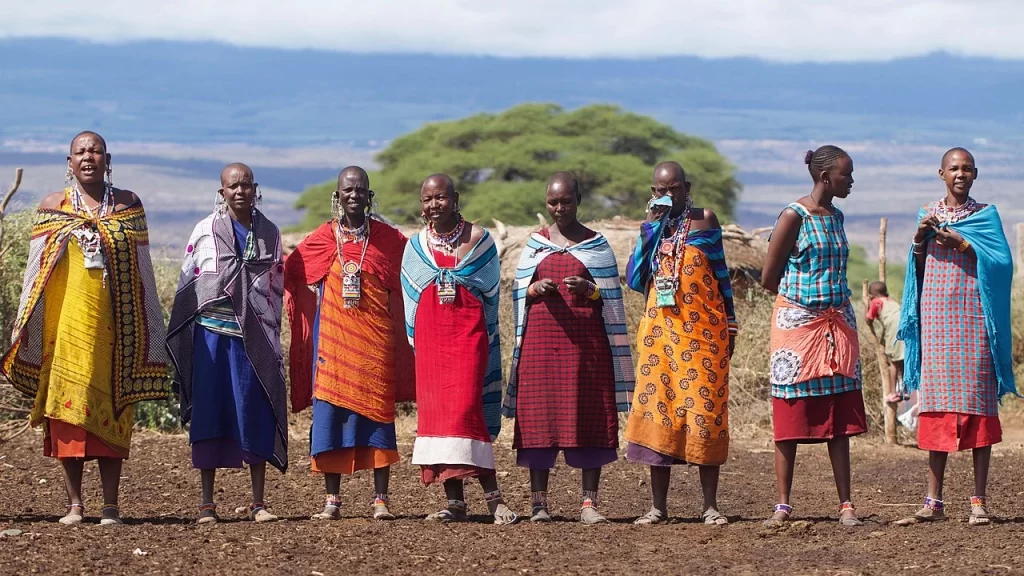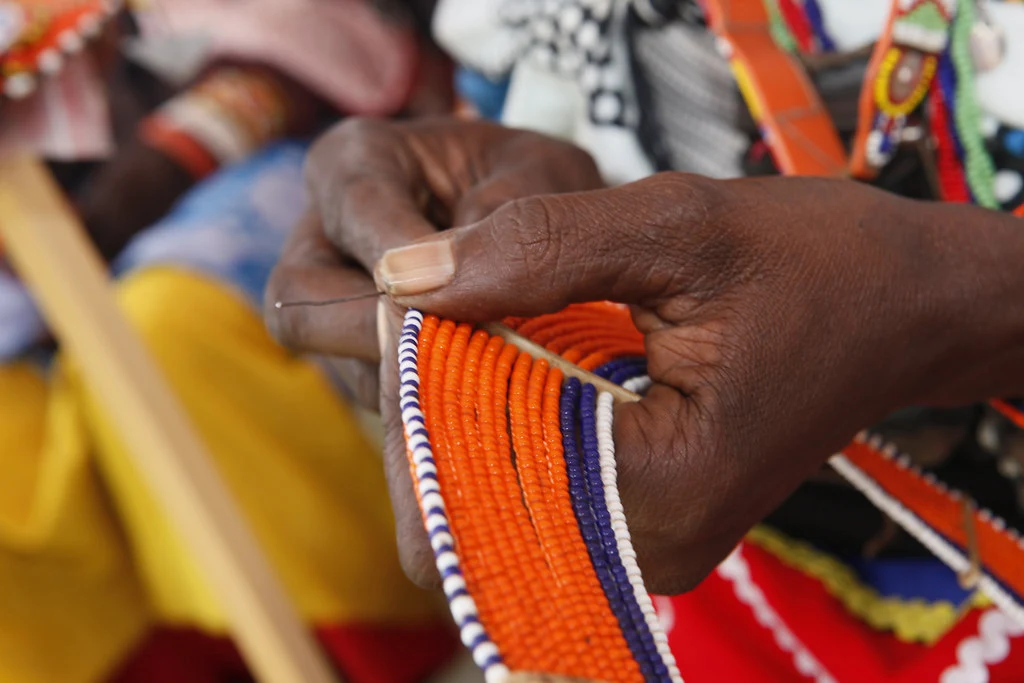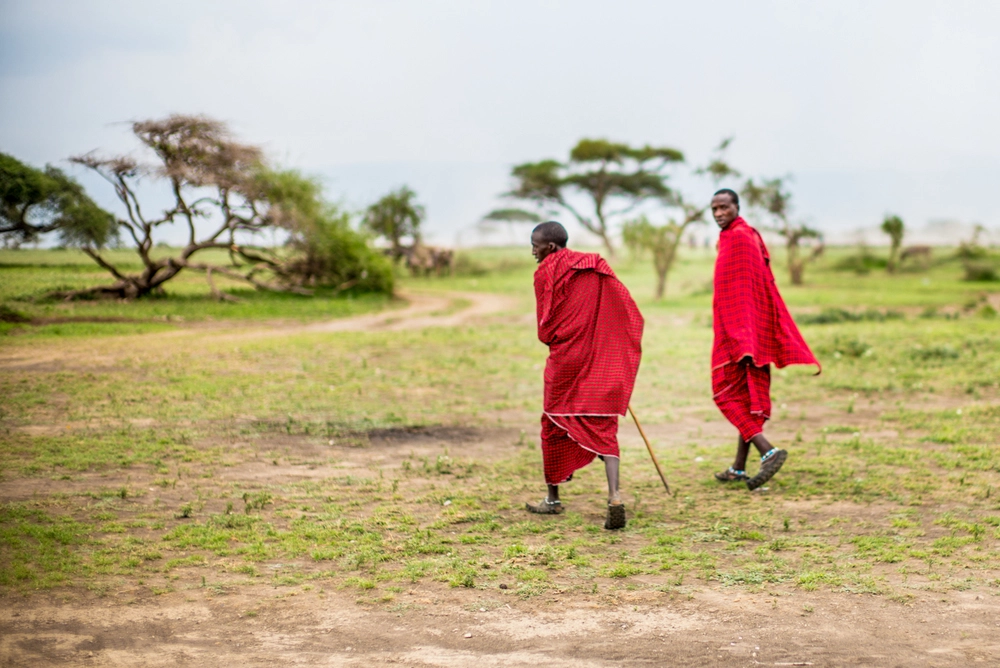The Maasai tribe is an indigenous ethnic group, mainly Nilotic inhabiting the northern, central and southern parts of Kenya and Tanzania. They speak the Maa language and are internationally known for their distinctive culture, rituals, high jumping dance, custom dress and their courageous warriors. They also speak the official languages of Kenya and Tanzania, Swahili and English. Maasai society is firmly patriarchal, with elder Maasai men sometimes joined by retired elders, whose main agenda is to ensure the smooth running of the community’s activities.

The Maasai population is estimated to be 1,189,522 in Kenya and approximately 800,000 in Tanzania. Many Maasai tribes frequently get visited in their villages to experience their culture and traditions and as a result, bring in foreign exchange to the country.
They have traditionally relied on using the available cheap technology to construct their unusual and interesting shelters. The Maasai are a united community and mainly live in villages that are enveloped in a circular fence built by men bringing security at night to their cattle from wild animals.
What is the difference between Masai and Maasai?
Masai is an incorrect spelling of the tribe Maasai which was brought by the British settlers and has remained in use up to date. Maasai is the correct spelling of this tribe, and it mainly means people speaking the Maa language. The two spellings may however be “correct”.The English language has a long history of anglicizing foreign words for local use, depending on whether you are an English speaker or Tanzanian speaker.
Where Do The Maasai People Come From?
According to the tribe’s history, the Maasai originally originated from northwest Kenya, north of Lake Turkana. They later on migrated to the south and settled in The Great Rift Valley and Dodoma, Tanzania during the 18th and 19th centuries.

They were Kenya’s dominant dominant tribe until they were driven away by the British from their lands. They were forced to leave Kenya’s most productive lands and in turn, were left with some destitute parts of the country. In addition, the Maasai were feared for raiding cattle and their warriors were well known for excellent use of spears and shields but were especially feared for throwing their clubs known as ‘orinka’. They would throw their ‘orinka’ for a distance of up to 100 meters.
The result of their migration led to the Maasai now being the southernmost Nilotic speakers. Maasai in Tanzania moved from their lands between Mount Kilimanjaro and Mount Meru in the 1940s. This was a result of more land being left aside for the creation of national parks and wildlife reserves such as the Maasai Mara, Samburu, Ngorongoro, Amboseli, Serengeti and Tarangire national parks.
What Is Unique About The Maasai?
The Maasai are known for their unique garb and body ornamentation. The most distinctive Maasai garment is the shuka, which is usually red with a checked decoration. The outfit has lately been widely used by designers and jewelry designers have also taken artistry from Maasai jewelry, especially the beads, necklaces and bracelets.

Their livestock and children are very important to them. For a very long time, they have been semi-nomadic and pastoral, living their daily lives by herding goats and cows. This gives an individual a high status in the community, respect and honor. A young Maasai woman would give birth to as many children as she can, showing how wealthy the husband is. This has however been discredited since many have been encouraged to adopt family planning methods to ensure that chances of over-population are minimized in the country.
Maasai Cultural Practices
The Maasai have many cultural ceremonies such as Enkipaata (senior boy ceremony), Emuratta (circumcision), Enkiama (marriage), Eunoto (warrior shaving ceremony), Olngesher (junior elder ceremony) and Ilkipirat(leg fire marks) among others. They are one of the most culturally distinctive tribes that are known in Africa.
The circumcision ceremony is the most vital rite of passage that the Maasai concentrate mostly on in their society. Both men and women are traditionally supposed to go through the rite whereby this is performed shortly after puberty. The circumcision for women has however been discredited in modern society regarding it as an inhuman act that degrades the lives of young girls. Special human rights groups have also taken the challenge to ensure all that perform the rites are arrested and the law acts upon them strictly.
The young Maasai men are still undergoing the rite and later on are promoted to become warriors. Circumcision liturgy hoists an individual from childhood to adulthood and it takes place shortly before sunrise. The initiates receive gifts of livestock from relatives and friends after the ritual is completed.
It is important to note that many of The Maasai rites and rituals have been eroded due to influence from modern society and modern technology but some still perform them regardless.
Maasai Clothing

The most visually striking aspect of the Maasai is their mode of dress and jewelry. They are famous for their traditional robe, the Shuka which is characterized by its predominantly bright red color and its checked decoration. Except for this, the Maasai also wear jewelry created with nice beads and a metal wire to identify their social status, clan and many more.
To the Maasai, red is the most frequently used color which symbolizes courage, bravery and strength. They also have a belief that this color scares away wild animals and predators from a long distance.
Their clothing varies by sex, age and place. For young men, black is the ordeal color after their circumcision. The Maasai women systematically weave and bead jewelry playing a vital role in the ornamentation of their body. Maasai also do ear piercing and the stretching of the earlobes as part of their beauty.
Maasai Rite Of Passage
The Maasai have three main rites of passage which are; Enkipaata, Eunoto and Olng’esherr. Enkipaata is the introduction of boys who have not yet gone through the initiation rite, Eunoto is the shaving of the initiates before they are secluded from the community for their training and Olng’esherr is a meat-eating ceremony that usually marks the end of childhood and the beginning of adulthood. These three rites are usually performed on males only aged between fifteen and thirty years in the Maasai community.
This rite is conducted by the whole community and gives the Maasai community a sense of belonging and cultural identity. It also unites members of the community despite the challenges that they may face from modern science and technology. The core values that are acquired by these young people include responsibility, bravery and gratitude.
